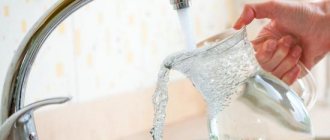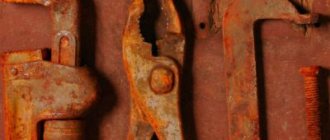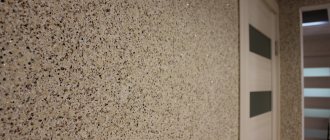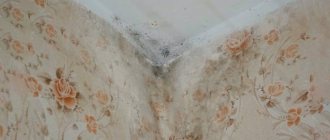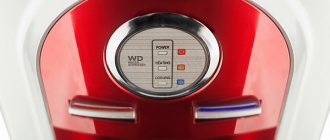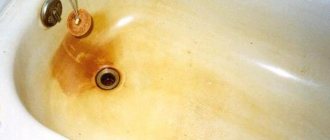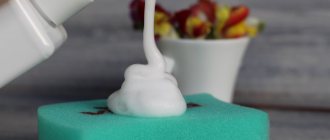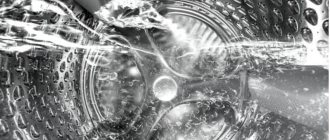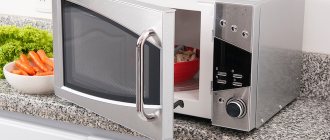Is rust harmful to the teapot and to humans?
In addition to the fact that the appearance of the dishes will be very spoiled by rust, it will also directly spoil the taste of the prepared drink.
A large layer of plaque on the heating elements of the kettle will be a catalyst for its rapid failure, so rust must be removed as quickly as possible and the kettle taken care of so that it does not appear at all. However, it is necessary to clean the kettle from scale and rust immediately, when it first appears.
A large amount of metal in the body, which can enter through drinking water from a kettle with rust, will also cause harm. This is most often an eating disorder, skin and dental problems.
Why does rust need to be removed?
Harm from rusty plaque:
- prevents heating - boiling time increases;
- the walls of the kettle are destroyed;
- the electric kettle stops turning off automatically;
- The heating element fails.
Rust is also harmful to human health, since inorganic iron compounds are not absorbed:
- when the kidneys remove the main part of the rust, the load on the excretory organs increases;
- from the remaining part of the rust, insoluble salts are formed, which accumulate in tissues and contribute to the formation of stones in the kidneys and blood vessels.
Removing rust from an electric kettle
In order to remove the rusty layer, you need to use several proven products.
Vinegar
Regular table vinegar should be used as a good means of cleaning rust from containers. To do this, boil three-quarters of the total volume of clean water in kitchen utensils, then turn it off and pour a quarter of the vinegar into hot water. This mixture must be left in the kettle for 8-10 hours, then washed well with clean water. Moreover, more than one wash will be required.
To remove any acidic smell that may remain, you will need to simply boil clean water several times.
Lemon acid
Citric acid is one of the main methods, but very effective. Depending on the degree of contamination, one or two packages are needed, which must be poured into a container, filled with cold water and brought to a boil. In particularly advanced cases, it is recommended to boil this mixture for another 10-15 minutes. After the procedure, the dishes are rinsed with clean water.
Sometimes, instead of citric acid, regular lemon is used in the powder. The proportions are one to one: a bag of citric acid is equal to one fresh lemon.
Soda
To clean a regular kettle from rust, you need to use two teaspoons of soda, add clean water and boil. As soon as the mixture reaches a boil, turn it off and leave until the device cools down. Rinse the kettle with clean water and you can use it for its intended purpose.
Very often, ordinary baking soda is used as a cleaning agent.
Brine
This remedy is effective not only for hangovers, as people have tested. To remove rust from the inside of metal utensils, you need to pour in brine, boil and leave until it cools completely. But the specific smell will remain for some time, and you will only need to rinse the dishes with clean water several times to get rid of it.
Carbonated drinks
Cola, despite its duality, remains one of the favorite drinks of many. But not only this, but also Fanta, Sprite or Pepsi can easily remove rust from a kettle. To do this, you just need to pour out the drink and leave it overnight. In the morning, the rust will come off quite easily if you wipe the walls of the dishes with a regular sponge.
Vinegar and soda
Some people use a mixture of baking soda and vinegar to simply remove any dirt from inside the kitchen utensils. The recipe for use is simple: mix both ingredients, pour them into hot boiled water and leave for several hours. When the dirt is gone, the vessel needs to be rinsed several times.
Household chemicals
There are a number of special chemicals that are used to remove scale. These include Unicum, Puisar and Stork, but there are many other analogues. You need to use chemicals carefully, make sure that they do not get on your skin or mucous membranes, and rinse the dishes well after using them.
Unicum grease remover.
What to do with rust stains?
Even on stainless steel products, traces of rust appear after some time. Formations can affect the device both externally and internally. There is no point in blaming the manufacturers. Usually, it is not the material itself that rusts; rather, iron impurities contained in tap water accumulate on its surface.
Tip: The problem of rust formation on stainless steel will not arise for very long if you do not leave the kettle filled with water overnight.
To clean rust in the form of local formations, you can use a mixture of vinegar and soda, citric acid. This product must be diluted with water (no more than a tablespoon per liter of liquid). If the stain is fresh and not very large, try rubbing it with a potato cut. But the use of metal brushes is strictly prohibited. They are not recommended to remove even traces of fat; the problem will only get worse.
Removing rust from an enamel kettle
It is believed that an enamel teapot, like any other utensils coated with enamel, needs a little more attention and care. But there are quite simple ways to clean a kettle from rust, even if it is covered with enamel on both sides.
Peels of fruits and vegetables
It copes well with deposits of plaque and rust, as well as any unpleasant odor from orange, apple or potato peels. It needs to be thoroughly cleaned, washed from any contamination, put in a kettle and filled with water. Boil the mixture, turn it off and leave for 3-5 hours. After this, rinse it with clean water. The acids in the composition act flawlessly and clean the device well.
Spoiled milk
Any fermented milk products, such as whey and kefir, can help clean the kettle of dirt. To do this, you need to rinse the kettle, pour the fermented milk products into the container and boil well. After the liquid has cooled, the kettle will already be very clean. To remove the remaining sour milk, you will need a regular sponge.
Household chemicals
Among the variety of chemicals, it is necessary to choose one whose composition and application features indicate that it is excellent for any surface. It should also be taken into account that not all preparations will completely remove all rust the first time. After cleaning according to the instructions, you will need to rinse the kettle several times with clean water. Even the smallest particle of chemicals will be harmful to the health of the body.
Recommendations and preventive measures
There are several ways to clean an electric kettle from rust inside. But with severe contamination, home and professional remedies do not always give results. To prevent the appearance of rusty plaque itself, you must:
- boil only filtered liquid with a minimum content of hard impurities in an electric appliance;
- do not leave water inside the kettle, but immediately drain the excess and rinse the unit under the tap;
- Clean the device at the first sign of rust or limescale deposits.
Removing fresh deposits from the walls of an electrical unit is quite simple. The problem is usually rust, which has been accumulating for months and has managed to properly corrode the metal inside the kettle.
Cleaning the outside of the kettle
To clean the outside of the container, you must use either acids or special products. If these are acids, then apply vinegar or a solution of citric acid to the sponge and thoroughly clean all contaminated areas.
The kettle needs cleaning on the outside.
Some even advise finding a large basin, filling it with water and adding vinegar and soda or citric acid, and setting the enamel kettle to the very top so that it is completely covered. You will need to leave the vessel for a while and you can take it out clean. Remove any remaining dirt using a sponge.
Special products in the form of spray and gel are also quite effective. They are applied to the surface and washed off after the specified period. It’s better to rinse a couple of times with clean water to be sure.
Preventive measures
To prevent rusting use:
- bottled drinking water;
- purified in filter jugs using cassettes that remove iron;
- water from filtration systems.
When operating water heating devices, it is necessary:
- discard unused boiled water;
- pour water only before boiling;
- wash and dry the kettle once a day;
- clean rust stains;
- do not use abrasive products.
An original approach to solving the problem
The most correct and original approach to solving the issue of the appearance of large amounts of copper oxide is proper and timely cleaning.
Water must be used only from the filter, and the remaining water after boiling should be drained. It is not recommended to store it inside the kettle.
Before you start using the kettle, you need to prepare it correctly. To do this, boil salted water in it and leave for several hours. This manipulation will help hold all the elements together and resist scale.
The effect of rust on the human body
Rust is a combination of iron and oxygen. Both elements are beneficial for the human body separately. After all, with a lack of iron in the blood, anemia occurs, which manifests itself as inhibition of vital processes in the body. But the oxidation of iron inside the teapot leads to the fact that harmful substances get inside a person when he drinks tea. Lingering in the body, iron oxides or salts irritate the gastric mucosa. Rust causes skin rashes, allergic reactions, and hormonal imbalances. It is dangerous for people with kidney failure to drink such water. Particles of rusty sediment cover the walls of the kettle, rendering the dishes unusable.
What you should and shouldn't do
If you use all the possibilities too much, you can simply ruin the kettle. For cleaning, you need to use only proven methods that will not harm the coating itself or your own health.
A well cleaned kettle.
Do not use strong substances based on sulfuric or hydrochloric acid for cleaning and removing contaminants. They are too aggressive and can ruin the metal.
Also, do not scrub too hard with steel wool, scrapers or knives. Not only will this not help remove rust, but it will also act as a catalyst for its spread.
Rust protection will extend the life of the device
In order to encounter phenomena such as scale, limescale and rust as rarely as possible, you can take care of competent prevention:
- it is recommended to boil water that has previously undergone additional filtration and purified from metal salts and other impurities;
- after use, you should pour out the remaining water from the device, leaving it empty;
- If you don’t wait until the walls and bottom of the container are covered with a persistent coating, but clean the kettle for preventive purposes at least once every 3-4 weeks, then you can subsequently save time on dealing with more serious dirt and sediment.
A kettle is a kitchen appliance that you cannot do without. And besides, people get used to a convenient device and it’s such a pity to part with it if it breaks. But, if you take good care of your kettle and know how to remove scale or rust, you can use it for many years and not think about having to buy a new one.
Source: mamamoet.ru
The appearance of rust
In order to remove the problem, you need to know where it starts. People who have access to water of high quality in all respects are very lucky. Most people have to use hard water with a high content of various mineral salts and trace elements for drinking and cooking.
If there is a lot of iron in the water, a coating of rust will definitely form on the walls of the pots and in the kettle. Once we have figured out where the cause of the rust comes from, we will begin to remove it.
How to descale a kettle with soda?
Soda is suitable for enamel and electric kettles. It is an affordable, but at the same time universal remedy, very effective in the fight against limescale deposits on the walls of teapots.
However, you need to be careful with it, since hard grains can damage the surfaces by scratching them.
Most likely, you will have to repeat cleaning the kettle with soda. Since it is a fairly mild product, one application for a heavily damaged surface will not be enough.
You need to fill the kettle halfway with water and pour two teaspoons of soda into it. Let the water boil, then, reducing the flame, boil for 25-35 minutes. Drain the water and rinse the inside of the kettle.
If the kettle is electric with an auto-shut-off mode, then simply after the appliance has finished boiling, leave the water and soda in it until it cools completely.
Removing scale from the kettle
In order for your kettle to look fresh not only on the outside, but also on the inside, you need to know how to clean the scale inside the kettle:
- A special product, for example, “Antinakipin” or “Silat”. They can remove scale from any kettle. As usual, you need to boil the water with this product for several minutes. Pour out the solution and rinse well.
Important! This is the easiest way, but you need to remember that the harmful substances included in the composition can affect your health. Therefore, rinse the kettle as thoroughly and efficiently as possible.
- Apple or apple cider vinegar. Cut the apple into pieces, or take 1 glass of vinegar and add to a kettle with 1 liter of water. The procedure is simple: boil, pour and rinse.
Don’t think that there are so few ways to rinse and descale a kettle, these are just some of the ways. You can also use absolutely all the methods that have been described to remove rust, the main thing is to look carefully and do not clean the plastic kettle with anything that is not necessary.
